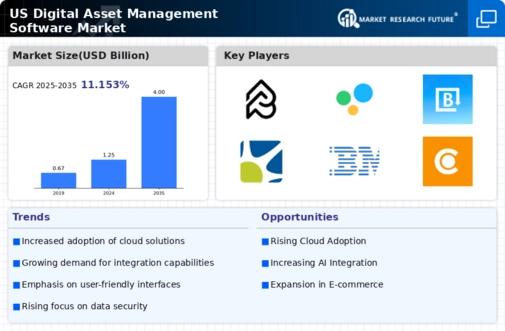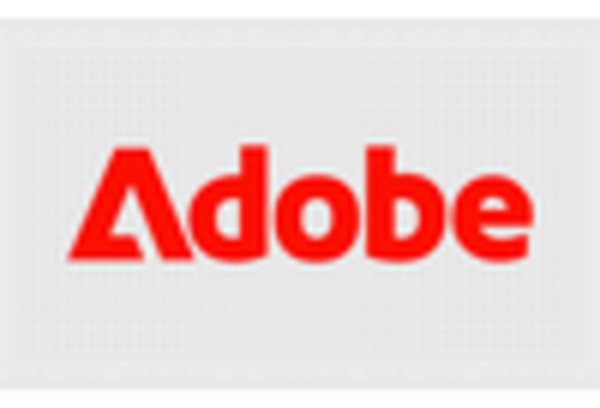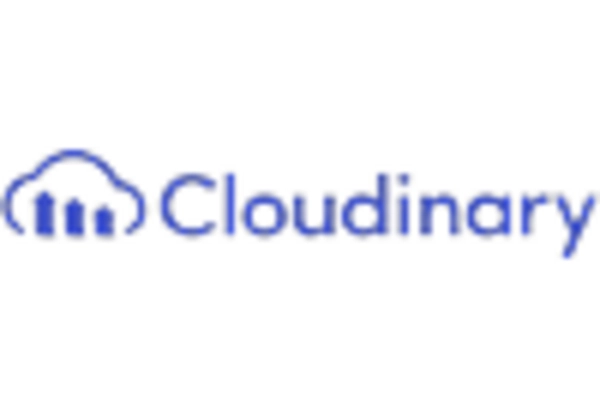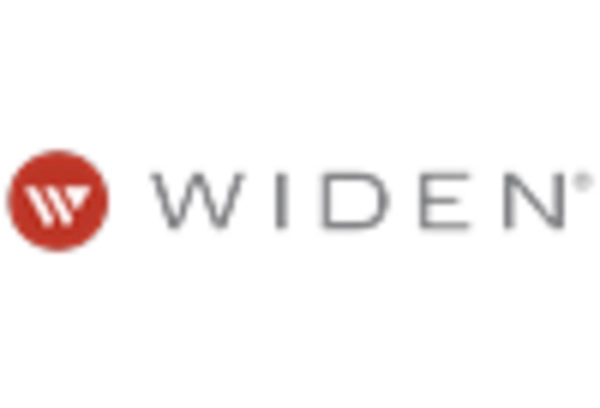Emergence of Remote Work Culture
The shift towards remote work has transformed how organizations manage their digital assets. The digital asset-management-software market is benefiting from this trend as companies require solutions that support collaboration among distributed teams. With remote work becoming a long-term strategy for many businesses, the need for cloud-based digital asset-management systems has surged. Reports suggest that approximately 40% of companies are now prioritizing digital tools that facilitate remote collaboration. These systems allow teams to access, share, and collaborate on digital assets seamlessly, regardless of their physical location. As remote work continues to be a prevalent model, the demand for effective digital asset-management solutions is expected to grow, driving innovation and investment in this sector.
Increased Focus on Brand Consistency
In today's competitive landscape, maintaining brand consistency across various channels is paramount for businesses. The digital asset-management-software market is experiencing growth as organizations seek tools that ensure uniformity in branding. Companies are investing in software solutions that facilitate the centralized management of brand assets, enabling teams to access approved logos, images, and templates easily. This focus on brand consistency is reflected in a reported 25% increase in the adoption of digital asset-management systems among marketing teams. By leveraging these tools, businesses can enhance their brand identity, improve customer recognition, and ultimately drive sales. As the importance of cohesive branding continues to rise, the digital asset-management-software market is likely to expand further to meet these needs.
Regulatory Compliance and Data Governance
With the increasing scrutiny on data privacy and compliance, organizations are prioritizing regulatory adherence in their digital asset management practices. The digital asset-management-software market is witnessing growth as companies seek solutions that ensure compliance with regulations such as GDPR and CCPA. These regulations necessitate robust data governance frameworks, prompting businesses to invest in software that can help manage and protect sensitive digital assets. The demand for compliance-focused digital asset-management solutions is projected to rise, with estimates suggesting a 15% increase in adoption rates among organizations concerned about data privacy. As regulatory landscapes evolve, the digital asset-management-software market is likely to adapt, offering features that support compliance and governance.
Rising Demand for Digital Content Management
The increasing volume of digital content generated by businesses is driving the digital asset-management-software market. Companies are producing vast amounts of images, videos, and documents, necessitating efficient management solutions. In fact, studies indicate that organizations are experiencing a growth rate of approximately 30% in digital content annually. This surge in content creation leads to a heightened need for software that can streamline storage, retrieval, and sharing processes. As businesses recognize the importance of maintaining a well-organized digital library, the demand for robust digital asset-management solutions is expected to rise significantly. This trend is particularly evident in sectors such as marketing, media, and e-commerce, where effective content management is crucial for operational efficiency and competitive advantage.
Growing Importance of Analytics and Reporting
As organizations increasingly rely on data-driven decision-making, the role of analytics in the digital asset-management-software market is becoming more pronounced. Companies are seeking solutions that not only manage assets but also provide insights into asset performance and usage. The integration of analytics features into digital asset-management systems is likely to enhance their value proposition. Businesses are recognizing that understanding how assets are utilized can lead to improved marketing strategies and resource allocation. This trend is reflected in a reported 20% increase in the demand for analytics-enabled digital asset-management solutions. As organizations strive to optimize their digital asset strategies, the emphasis on analytics is expected to propel growth in the digital asset-management-software market.
















Leave a Comment